Absence of Prenatal Forebrain Defects in the Dp(16)1Yey/+ Mouse Model of Down Syndrome
- PMID: 26961948
- PMCID: PMC4783496
- DOI: 10.1523/JNEUROSCI.2513-15.2016
Absence of Prenatal Forebrain Defects in the Dp(16)1Yey/+ Mouse Model of Down Syndrome
Abstract
Studies in humans with Down syndrome (DS) show that alterations in fetal brain development are followed by postnatal deficits in neuronal numbers, synaptic plasticity, and cognitive and motor function. This same progression is replicated in several mouse models of DS. Dp(16)1Yey/+ (hereafter called Dp16) is a recently developed mouse model of DS in which the entire region of mouse chromosome 16 that is homologous to human chromosome 21 has been triplicated. As such, Dp16 mice may more closely reproduce neurodevelopmental changes occurring in humans with DS. Here, we present the first comprehensive cellular and behavioral study of the Dp16 forebrain from embryonic to adult stages. Unexpectedly, our results demonstrate that Dp16 mice do not have prenatal brain defects previously reported in human fetal neocortex and in the developing forebrains of other mouse models, including microcephaly, reduced neurogenesis, and abnormal cell proliferation. Nevertheless, we found impairments in postnatal developmental milestones, fewer inhibitory forebrain neurons, and deficits in motor and cognitive performance in Dp16 mice. Therefore, although this new model does not express prenatal morphological phenotypes associated with DS, abnormalities in the postnatal period appear sufficient to produce significant cognitive deficits in Dp16.
Keywords: cognition; developmental milestones; embryonic development; trisomy 21.
Copyright © 2016 the authors 0270-6474/16/362926-19$15.00/0.
Figures
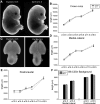
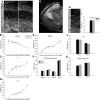
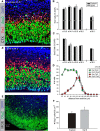


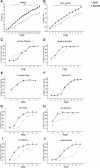
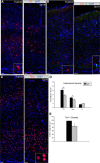

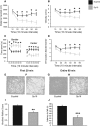
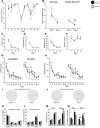
Similar articles
-
Lifespan analysis of brain development, gene expression and behavioral phenotypes in the Ts1Cje, Ts65Dn and Dp(16)1/Yey mouse models of Down syndrome.Dis Model Mech. 2018 Jun 12;11(6):dmm031013. doi: 10.1242/dmm.031013. Dis Model Mech. 2018. PMID: 29716957 Free PMC article.
-
The "Down syndrome critical region" is sufficient in the mouse model to confer behavioral, neurophysiological, and synaptic phenotypes characteristic of Down syndrome.J Neurosci. 2009 May 6;29(18):5938-48. doi: 10.1523/JNEUROSCI.1547-09.2009. J Neurosci. 2009. PMID: 19420260 Free PMC article.
-
Effects of individual segmental trisomies of human chromosome 21 syntenic regions on hippocampal long-term potentiation and cognitive behaviors in mice.Brain Res. 2010 Dec 17;1366:162-71. doi: 10.1016/j.brainres.2010.09.107. Epub 2010 Oct 26. Brain Res. 2010. PMID: 20932954 Free PMC article.
-
[Comprehensive Analyses of Molecules with Altered Expression in the Brain of a Mouse Model of Down Syndrome for Identification of Pharmacotherapeutic Targets].Yakugaku Zasshi. 2017;137(7):807-810. doi: 10.1248/yakushi.16-00236-3. Yakugaku Zasshi. 2017. PMID: 28674291 Review. Japanese.
-
[Molecular Mechanism Underlying Abnormal Differentiation of Neural Progenitor Cells in the Developing Down Syndrome Brain].Yakugaku Zasshi. 2017;137(7):795-800. doi: 10.1248/yakushi.16-00236-1. Yakugaku Zasshi. 2017. PMID: 28674289 Review. Japanese.
Cited by
-
Rescuing Over-activated Microglia Restores Cognitive Performance in Juvenile Animals of the Dp(16) Mouse Model of Down Syndrome.Neuron. 2020 Dec 9;108(5):887-904.e12. doi: 10.1016/j.neuron.2020.09.010. Epub 2020 Oct 6. Neuron. 2020. PMID: 33027640 Free PMC article.
-
Early impacts of modified food consistency on oromotor outcomes in mouse models of Down syndrome.Physiol Behav. 2019 Feb 1;199:273-281. doi: 10.1016/j.physbeh.2018.11.031. Epub 2018 Nov 26. Physiol Behav. 2019. PMID: 30496741 Free PMC article.
-
Rodent models in Down syndrome research: impact and future opportunities.Dis Model Mech. 2017 Oct 1;10(10):1165-1186. doi: 10.1242/dmm.029728. Dis Model Mech. 2017. PMID: 28993310 Free PMC article. Review.
-
Neocortical neuronal production and maturation defects in the TcMAC21 mouse model of Down syndrome.iScience. 2023 Nov 2;26(12):108379. doi: 10.1016/j.isci.2023.108379. eCollection 2023 Dec 15. iScience. 2023. PMID: 38025769 Free PMC article.
-
A third copy of the Down syndrome cell adhesion molecule (Dscam) causes synaptic and locomotor dysfunction in Drosophila.Neurobiol Dis. 2018 Feb;110:93-101. doi: 10.1016/j.nbd.2017.11.013. Epub 2017 Nov 28. Neurobiol Dis. 2018. PMID: 29196216 Free PMC article.
References
-
- Anderson SA, Marín O, Horn C, Jennings K, Rubenstein JL. Distinct cortical migrations from the medial and lateral ganglionic eminences. Development. 2001;128:353–363. - PubMed
-
- Arendash GW, Lewis J, Leighty RE, McGowan E, Cracchiolo JR, Hutton M, García MF. Multi-metric behavioral comparison of APPsw and P301L models for Alzheimer's disease: linkage of poorer cognitive performance to tau pathology in forebrain. Brain Res. 2004;1012:29–41. doi: 10.1016/j.brainres.2004.02.081. - DOI - PubMed
Publication types
MeSH terms
Substances
Supplementary concepts
Grants and funding
LinkOut - more resources
Full Text Sources
Other Literature Sources
Medical
Molecular Biology Databases
Research Materials
